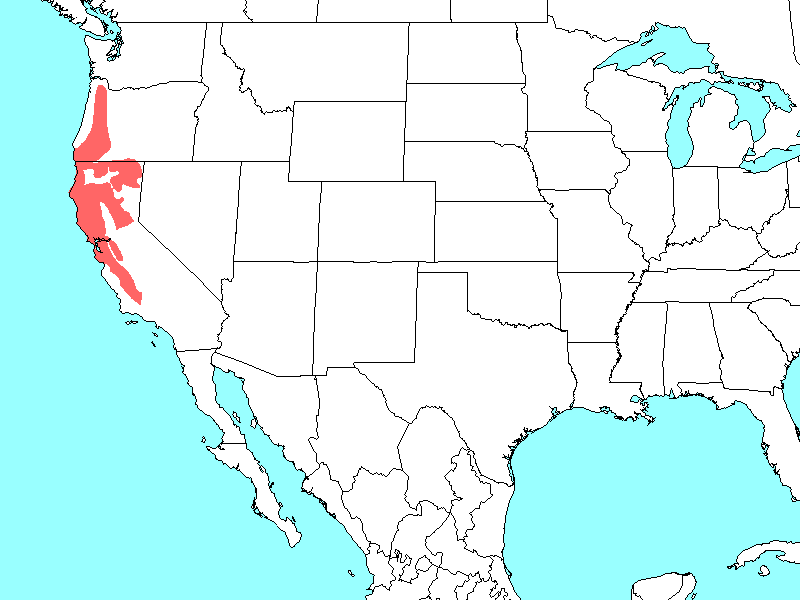Habitat
The Neotoma fuscipes lives in a very interesting habitat.
Though these animals may be very tiny in size but they make up for
it in the space they occupy. To learn more about the size and
features of the
wood rat visit the form and function
page. Their spacious life style can be observed in the area they
cover, the homes they build, and the communities they live in.
The Dusky Footed Wood rat lives in the forest of California.
In one of the areas of California, the Wood rat is located in a
habitat that is very wet, and their communities are located near an
area that has plants like Willows, Elderberries, Gooseberries,
and Cow Parsnips grow (Wallen, 1982).
 According to the author
stated previously, the animals forage for beats in the areas
nearby. The wood rat can also be found in the costal and
mountainous regions of northern California (M.B. McEachern, et
al. 2009). The same authors also stated that the costal and
mountainous regions where the wood rats are located can be
covered with mixed coniferous forest, juniper woodlands, or oak
woodlands. Although the animal lives in diverse areas around
California, their habitats have one thing in common the
communities are located near small streams (Neotoma fuscipes
the dusky footed wood rat, 2000). The Wood rat is very
territorial and aggressive toward outsiders. Although they are
territorial, they have high interaction with others in their
community.
According to the author
stated previously, the animals forage for beats in the areas
nearby. The wood rat can also be found in the costal and
mountainous regions of northern California (M.B. McEachern, et
al. 2009). The same authors also stated that the costal and
mountainous regions where the wood rats are located can be
covered with mixed coniferous forest, juniper woodlands, or oak
woodlands. Although the animal lives in diverse areas around
California, their habitats have one thing in common the
communities are located near small streams (Neotoma fuscipes
the dusky footed wood rat, 2000). The Wood rat is very
territorial and aggressive toward outsiders. Although they are
territorial, they have high interaction with others in their
community.
The interactions can be examined by looking at the lay out of
the houses and also the frequency in which certain houses are
occupied. The areas in which the homes are built are not in open
meadows or chaparral, but rather are found in areas covered with
thick underbrush (Wallen, 1982). By
staying in the underbrush it helps the wood rat to stay cool and
avoid the heat (Neotoma fuscipes, 2000). The houses in the underbrush are densely clustered
near each other forming isolated community (Wallen, 1982). The
community can range in size from three nest all the way up to
fifteen homes (Neotoma fuscipes, 2000). Many of the houses, are used regularly by one animal
(Wallen, 1982). Wallen states that these houses are very
permanent, meaning most of the animals in the community stay in
the same home through their life. Common houses are homes used
frequently by these animals. There is no
inhabitant but is rather a meeting place for the wood rats within
the community. All of the homes are occupied by one individual
at a time (Wallen, 1982). Within the community it is the males
will travel farther away from their homes than the females
(Wallen, 1982). To learn more about the interactions of the wood
rat visit both the interactions
page and the reproduction page.
Within the communities each wood rat’s home is similar in many
ways.
There are many commonalities within the build of the wood
rats’ homes. The wood rats large and complex homes are made of
stick these homes are about five feet high and eight feet in
diameter (Wallen, 1982). These homes are
built around logs or near trees (Dusky-footed wood rat). The
article Dusky-footed Wood rat also states that inside the homes
the nest are built out of nibbled on leaves from California bay
laurel tree. Scientist believe that the animal uses these leaves
to protect themselves from mites, fleas and
ticks.
Home
Form and Function
Gabriella Tuminello and Emma Conway of the University of
Wisconsin - La Crosse. Bio 203 - Spring 2014